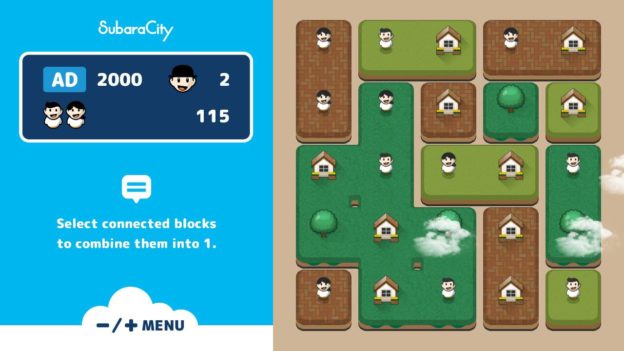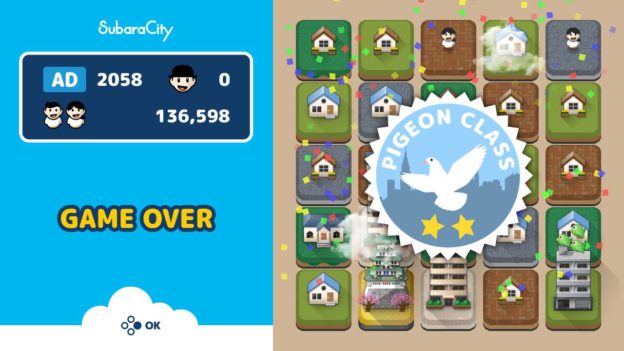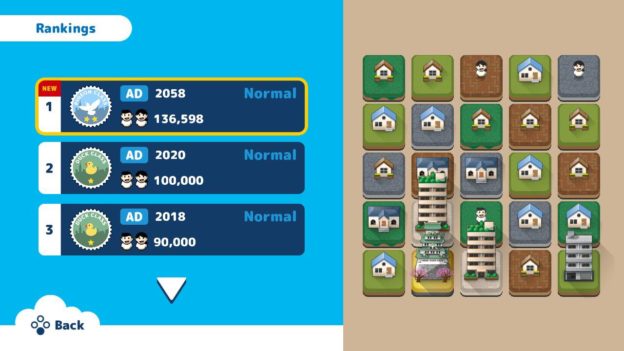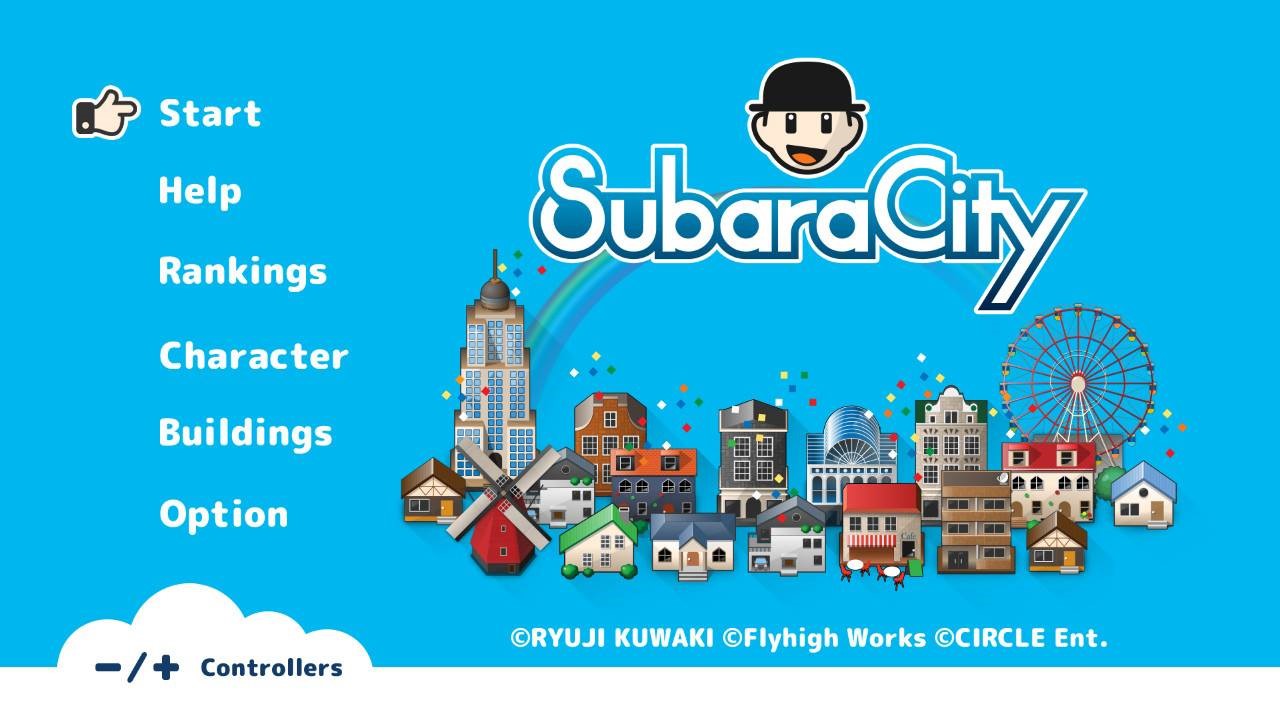SubaraCity is a puzzle strategy game that gives an interesting twist on the block matching genre. In this game, not only are you matching the same-colored blocks but you’re also matching the same types of houses and buildings to create bigger buildings. The goal of SubaraCity is to unlock as many different types of buildings all the while trying to beat your own high score.

SubaraCity can be played docked on the TV with a set of Joy-Con or it can be played in handheld mode using the touchscreen. I personally enjoyed playing in handheld mode the best because I found it easier to tap the blocks to switch them around rather than using the analog stick to move from one block to the next.
In order to match the same types of houses together, they must be on the same terrain – grass, brick, concrete, etc. There’s some thinking and strategy involved. Once you match something together, it becomes one block and new blocks fall from the top. It’s easy to trap yourself until you have no moves left. At the start, you get two mayors. Once you’re out of moves, you can use one mayor to delete a block. You can gain one mayor for each 100 years in the game – each move is one year. Once you’re out of mayors and out of moves, then it’s game over.

There are no levels in this game. It’s one and done. Once it’s game over, your score goes on the rankings list and then you start a new game all from scratch. There are three save files to the game though they don’t really do anything. If you’re in the middle of a game, you can save and quit and the game will be on one of the save files. However, the games are pretty quick so there’s no need to save in the middle. Once you complete a game, your score is automatically saved on the rankings board.
There are levels of houses. Once you get a house to level 10, you can match it with another level 10 house to unlock a level 11 house. Or, if you have four level 10 houses together you can match them and automatically get a level 13 house. Match as many level 10 houses as you can to keep discovering bigger and better buildings.

There are two modes to the game – Normal and Casual. For the most part, they’re the same. Casual is a little easier having only three terrains instead of four, but you can’t gain any mayors which means you can get game over faster. Normal has four terrains but allows you to gain mayors in an attempt to stay in the game longer. I played both versions and honestly, normal mode seemed easier than casual. They both play the same and there’s no time limit for either of them. The only difference is on the rankings board. It will state whether the score was from normal mode or casual mode.
The main difference I noticed between the two was the music. The music for the casual mode was calm and soothing. It fit the casual and laid-back essence of the game. The music for the normal mode didn’t seem to fit in with the game. It sounded epic or ominous. It didn’t quite match the gameplay and I found it more distracting than anything else.

SubaraCity is a relaxing, casual game. However, it’s bare bones and it can get boring after a while. There are only two modes which are very similar to one another, no chance to beat any high scores other than your own, and there’s no story to back it up. There’s not even a lot of direction, even though it’s very easy to figure out what you’re supposed to do.
Review: SubaraCity (Nintendo Switch)
Subpar
SubaraCity is an interesting twist on the puzzle and strategy genres. While it’s great to pick up and play as you go, there’s not much to the game and can get boring quickly.


